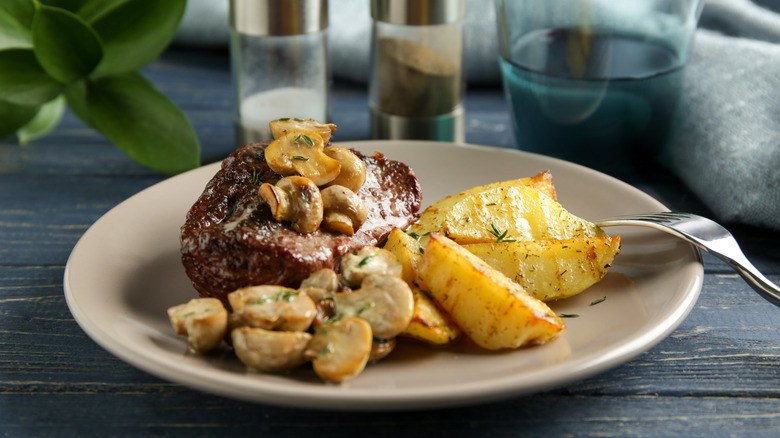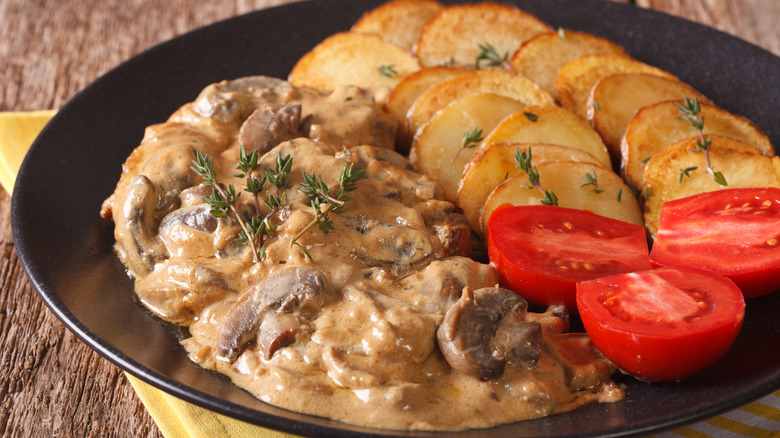What Is Steak Diane And Who Is It Named After?
Steak Diane is a dish associated with the glitzy hotels of mid-century New York City, but its exact origins probably go back even further than that. Although you don't see its name on menus too much anymore, steak Diane isn't incredibly complicated to make, and it bears resemblance to French-inspired fare like steak au poivre. It's a pan-fried steak, usually a circular cut like a tenderloin medallion or a filet mignon, covered in a sauce made from its own juices and mixed with mustard, Worcestershire sauce, and heavy cream. This is the so-called "Diane" sauce, possibly related to another sauce that was named after the Roman goddess of the hunt Diana.
That nomenclature makes more sense in a historical context. The "King of Chefs" Auguste Escoffier listed a recipe for "sauce Diane" in his 1907 cookbook "Le Guide Culinaire," which, according to historians Patricia Bunning Stevens and Betty Harper Fussell, was meant to serve as a condiment for venison — and deer are sacred to the moon goddess. The rich, peppery notes of sauce Diane were supposed to counter-balance the gaminess of deer meat, but beef became the centerpiece of the dish as the century rolled on.
Where was steak Diane created?
It's still a mystery as to where steak Diane made its debut — although it's clear that it isn't actually French despite its French cuisine inspirations. The dish may have appeared at the Café de Paris in London or the Copacabana Palace in Rio de Janeiro during the 1930s, but a New York Times article from 1968 states that the maitre d'hotel of New York's historic Drake Hotel, a man named Beniamino Schiavon, reportedly invented steak Diane in his original gig working in the kitchens of Ostend, Belgium's Plage Restaurant. Whatever the exact country of origin, New York was the place that popularized steak Diane and became its de facto home.
There's still debate, however, as to which fancy hotel truly brought steak Diane to the masses. It could have been the Drake, but another Times article from 1953 also lists the Sherry-Netherland Hotel and the Colony Restaurant as possible cradles of birth. It's difficult to pinpoint the exact establishment because steak Diane was seemingly everywhere in the halls of midcentury New York's high society gathering places. It was served right at the table with a theatrical flambée using luxurious basting of Cognac and butter, boosting its fancy reputation. Paradoxical for a dish originally made with gamy deer, steak Diane was a meal fit for the cushy elite.


